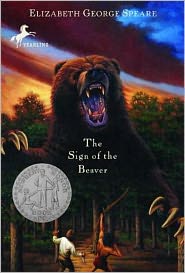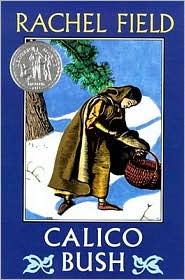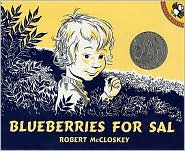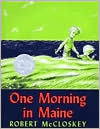Showing posts with label Historical Fiction. Show all posts
Showing posts with label Historical Fiction. Show all posts
Civil War Readings
After spending a good chunk of time reading and learning about the American Civil War, we are almost ready to move on in our history studies. Before we do, I wanted to share some of the wonderful books and resources we used to learn about the American Civil War.
Resources:
The Civil War: Primary Sources, edited by David M. Haugen
People at the Center of The Civil War, by Chris Hughes
You Wouldn't Want to be a Nurse During the American Civil War, by Kathryn Senior
The Gettysburg Address, by Abraham Lincoln
Freedom Train: The Story of Harriet Tubman, by Dorothy Sterling
The Emancipation Proclamation: Hope of Freedom for the Slaves, by Michael J. Martin
Historical Fiction Novels:
The Red Badge of Courage, by Stephen Crane
Across Five Aprils, by Irene Hunt
The Perilous Road, by William O. Steele
Turn Homeward, Hannalee, by Patricia Beatty
Shades of Gray, by Carolyn Reeder
Addy: An American Girl, by Connie Porter
Resources for Young Learners:
If You Lived When There Was Slavery in America, by Anne Kamma
Freedom Song: The Story of Henry "Box" Brown, by Sally M. Walker
Moses: When Harriet Tubman Led Her People to Freedom, by Carole B. Weatherford
When Harriet Met Sojourner, by Catherine Clinton
Civil War Drummer Boy, by Verla Kay
Abraham Lincoln Biographies
If You Grew Up with Abraham Lincoln, by Ann McGovern
Lincoln: A Photobiography, by Russell Freedman
Looking at Lincoln, by Maira Kalman
Related Post:
Civil War Day
Categories:
Biography,
Books,
Historical Fiction,
History,
Lessons
Light House Books
When our youngest finished his A to Z preschool year, I decided to review his letters and sounds, numbers and counting until summer break. With that in mind, I started looking through the library shelves for some interesting books with a summer theme or summer topic. We had already spent a great deal of time in science co-op learning about the ocean and coral reefs, but we hadn't really touched upon light houses.
Last year, for Mother's Day we had hiked to a nearby light house, and I knew our youngest remembered the experience. He knew what a light house was for and the importance of it. Without having to explain this to him, he could simply enjoy two new to us books we found at our local library.
The Bravest Woman in America, by Marissa Moss, describes the true adventures of Ida Lewis in picture book form. Ida grew up with a father who maintained a light house in the mid 1800's on the coast of Rhode Island. Ida helped her father and eventually became the light house keeper. The book we read told about Ida's first time saving lives at sea. Apparently, Ida went on to save many lives and was even awarded the Congressional Life Saving Medal. Following the story, an Author's Note offers a brief biographical sketch of Ida's life and work.
The Sea Chest, by Toni Buzzeo, offered a poetical version of a light keeper legend. Set on the coast of Maine, this book tells the tale of one light house keeper's family who finds a chest wrapped in bedding. Upon opening the chest, the family of three finds a baby with a note attached to her wrist. The family adopts the child and raises her on the light house island. Though the story is based on a legend and its truth is unknown, the story offers readers a sweet reminder of grace and love with the beautiful message of a child being a blessing.
In the past, our older children have enjoyed other light house books.
From our personal book shelves -
Manning the Light, by Terry Webb
Keep the Lights Burning, Abbie, by Peter Roop and Connie Roop
Linked to Read Aloud Thursday at Hope Is the Word
Categories:
Biography,
Books,
Fiction,
Historical Fiction,
Nonfiction,
Ocean,
Picture Books,
Read Aloud
Revolutionary War Read Aloud
In the past, when we studied the Revolutionary War time period, I read aloud two fabulous books. Mr. Revere and I, by Robert Lawson and Johnny Tremain, by Esther Forbes are the two selections we enjoyed greatly. Both books made the time period come alive in our minds. We could envision what it was like to live during the years of the Revolutionary War.
Four years later, we are on another journey through the Revolutionary War. This time, though I pondered revisiting those two books, I decided to read aloud a different book instead. It is a book that neither my children nor I have ever read before called My Brother Sam is Dead, by James Lincoln Collier and Christopher Collier.
From the initial chapter, I realized this book may not be the best fit as a read aloud to younger children. Within the first few chapters I had to change a few words and sentences on the fly. The tone is also very somber and gloomy. It is a taste of war from a family's perspective. It is raw and honest. In some aspects, it is cutting and harsh as the family members fight with one another. However, it realistically portrays one family's experience living and dying through the Revolutionary War time period.
Despite my initial aghast to some of the language, I have decided to keep reading through it with our children. Some of the more difficult relationship dynamics offer a spring board for remarkable discussions on human behavior and how war affects families.
Linked to Read Aloud Thursday at Hope is the Word.
Four years later, we are on another journey through the Revolutionary War. This time, though I pondered revisiting those two books, I decided to read aloud a different book instead. It is a book that neither my children nor I have ever read before called My Brother Sam is Dead, by James Lincoln Collier and Christopher Collier.
From the initial chapter, I realized this book may not be the best fit as a read aloud to younger children. Within the first few chapters I had to change a few words and sentences on the fly. The tone is also very somber and gloomy. It is a taste of war from a family's perspective. It is raw and honest. In some aspects, it is cutting and harsh as the family members fight with one another. However, it realistically portrays one family's experience living and dying through the Revolutionary War time period.
Despite my initial aghast to some of the language, I have decided to keep reading through it with our children. Some of the more difficult relationship dynamics offer a spring board for remarkable discussions on human behavior and how war affects families.
Linked to Read Aloud Thursday at Hope is the Word.
Categories:
Books,
Historical Fiction,
Read Aloud
Revolutionary War Reads
Since using the series of books for history studies worked well, and there are many, many American history books available begging to be read, I decided to assign a few more books to our daughters.
This time the history books covered the Revolutionary War time period. Our youngest read You Wouldn't Want to Be at the Boston Tea Party! by Peter Cook, and our oldest daughter read Can't You Make Them Behave, King George? by Jean Fritz. Both books are part of different series which place a humorous tone on history, and both books {actually, both series} are just fun to read. The girls eagerly completed the task of reading and orally narrating their individual books to our family.
Then, I assigned a bit more reading.
This time, our youngest daughter compared two books: Phoebe the Spy, by Judith Berry Griffin and Buttons for General Washington, by Peter and Connie Roop. She liked that the main characters were both children contributing to the war effort by serving General George Washington.
Meanwhile, our older daughter delved into a Magic Tree House book entitled Revolutionary War on Wednesday, by Mary Pope Osborne. She also used the accompanying research guide called American Revolution, by Mary Pope Osborne and Natalie Pope Boyce. This combination of fiction and nonfiction books offered her a fun way to learn more about the Revolutionary War. After her readings and research, she presented an oral report on the Hessian soldiers.
A side note: Though our oldest son did read a few books on the Revolutionary War, he is currently working on a project about Benjamin Franklin which I hope to share at another time.
This time the history books covered the Revolutionary War time period. Our youngest read You Wouldn't Want to Be at the Boston Tea Party! by Peter Cook, and our oldest daughter read Can't You Make Them Behave, King George? by Jean Fritz. Both books are part of different series which place a humorous tone on history, and both books {actually, both series} are just fun to read. The girls eagerly completed the task of reading and orally narrating their individual books to our family.
Then, I assigned a bit more reading.
This time, our youngest daughter compared two books: Phoebe the Spy, by Judith Berry Griffin and Buttons for General Washington, by Peter and Connie Roop. She liked that the main characters were both children contributing to the war effort by serving General George Washington.
Meanwhile, our older daughter delved into a Magic Tree House book entitled Revolutionary War on Wednesday, by Mary Pope Osborne. She also used the accompanying research guide called American Revolution, by Mary Pope Osborne and Natalie Pope Boyce. This combination of fiction and nonfiction books offered her a fun way to learn more about the Revolutionary War. After her readings and research, she presented an oral report on the Hessian soldiers.
A side note: Though our oldest son did read a few books on the Revolutionary War, he is currently working on a project about Benjamin Franklin which I hope to share at another time.
Categories:
Books,
Elementary,
Historical Fiction,
History,
Nonfiction
Teaching History with a Book Series
Sometimes, a series of books about a certain time period lend themselves well to our history studies. Such is the case with Adventures in Colonial America series, written by James E. Knight. Currently, we are learning about Colonial America and the Revolutionary War. These books fit nicely into that time period. I believe the books may be out of print, but I was able to pick them up at a used book sale last spring. I found five, including:
To incorporate these books into our history studies, I decided to have each of our older children read one book independently. Each child chose a book. They happened to chose the first three listed above. After reading their chosen book, the child wrote a summary, or narration of the book. The following day, each child shared their narration. I had them practice standing up and speaking in front of our small group. Then, after each narration we briefly discussed some of the interesting facts.
After the three older children shared their books, I read aloud the remaining two books. While I read about farm life in colonial Pennsylvania, the three older children wrote down interesting facts in a list form on the left side of their papers. Then, during the last book about city life in colonial Philadelphia, Pennsylvania, they wrote down interesting facts in a list form on the right side of their papers. After I had finished reading the two books, they were easily able to compare and contrast country farm living with city living during the colonial time period. Their lists could have easily transitioned to a Venn diagram, but we chose to simply discuss the differences and similarities.
Related Post:
A Colonial ABC Lesson
- The Village: Life in Colonial Times
- Salem Days: Life in a Colonial Seaport
- Journey to Monticello: Traveling in Colonial Times
- The Farm: Life in Colonial Pennsylvania
- Seventh and Walnut: Life in Colonial Philadelphia
To incorporate these books into our history studies, I decided to have each of our older children read one book independently. Each child chose a book. They happened to chose the first three listed above. After reading their chosen book, the child wrote a summary, or narration of the book. The following day, each child shared their narration. I had them practice standing up and speaking in front of our small group. Then, after each narration we briefly discussed some of the interesting facts.
After the three older children shared their books, I read aloud the remaining two books. While I read about farm life in colonial Pennsylvania, the three older children wrote down interesting facts in a list form on the left side of their papers. Then, during the last book about city life in colonial Philadelphia, Pennsylvania, they wrote down interesting facts in a list form on the right side of their papers. After I had finished reading the two books, they were easily able to compare and contrast country farm living with city living during the colonial time period. Their lists could have easily transitioned to a Venn diagram, but we chose to simply discuss the differences and similarities.
Related Post:
A Colonial ABC Lesson
Categories:
Books,
Historical Fiction,
History,
Lessons
Location, Location - Read Alouds Set in Maine
 We've read it before. About four years ago, when we first studied this time period in history, we followed another's recommendation to read The Sign of the Beaver, by Elizabeth George Speare. It did not disappoint. Though our children were young, the exciting story line captured their attention. This time, reading through the book, the children and I are appreciating the character development, interaction, and struggles.
We've read it before. About four years ago, when we first studied this time period in history, we followed another's recommendation to read The Sign of the Beaver, by Elizabeth George Speare. It did not disappoint. Though our children were young, the exciting story line captured their attention. This time, reading through the book, the children and I are appreciating the character development, interaction, and struggles. The Sign of the Beaver takes place in the Maine wilderness during the 1700's. Matt, a twelve-year-old, is left alone at his family's cabin while his father travels to bring his mother and siblings to the new settlement. The situations and people Matt meets while living alone are interesting and bring the time period to life. It fabulous to read aloud, whether the first time or second time. For those wondering what reading level this book is, I would consider it 4th to 6th grade level.
Other titles we have read aloud that are set in Maine are Calico Bush, Blueberries for Sal, and One Morning in Maine.
Calico Bush, written by Rachel Field, takes place during the 1740's in a northern part of Maine. The area where the Sargent family settles is quite isolated. However, the location is not the only reason Marguerite feels lonely. She has lost her family and now lives with the Sargent family as a servant. Neither the family nor the area feels like home to Marguerite. The story line is poignant, and thirteen-year-old Marguerite's courage and inner strength are admirable. The book is great for independent readers in grades 5th to 8th.
Both Blueberries for Sal and One Morning in Maine are written by Robert McCloskey. Each is a fabulous short story to read aloud to preschoolers or early elementary aged children. Our favorite of the two is Blueberries for Sal. After all, who doesn't love when Sal follows the momma bear and baby bear follows Sal's momma around on the blueberry hill?



To find more read aloud selections, visit Amy at Hope Is the Word
for this week's Read-Aloud Thursday link up.
Categories:
Books,
Elementary,
Fiction,
Historical Fiction,
Middle School,
Picture Books,
Preschool,
Read Aloud
Encouraging Them to Read History Related Books
It's no secret. We have lots of books in our home.
Some are ours, but a lot we borrow from friends and local libraries.
Each year, as we progress through history in a four year cycle, I try to find a variety of children's books set in, or about the time period we are studying. This is harder for ancient history, but quite easy for our current time period (1400's/1500's to 1850).
Due to the over abundance of selections, I started a new system this year. I still read aloud several selections to the children, but the extra books get placed in a basket. Each child is encouraged to read a few extra books each week.
To further encourage them, I made a graph that records each child's progress. We have four children with four different reading and comprehension abilities. To make it fair, we set guidelines for how many books must be read for each particular child to color a box.
Our guidelines:
7th grader - read 4 picture books / color 1 box; read 1 chapter book / color 1 box
5th grader - read 2 picture books / color 1 box; read 1 chapter book / color 2 boxes
3rd grader - read 1 picture book / color 1 box; read 1 chapter book / color 4 boxes
Preschooler - listen to 1 picture book / color 1 box
Eventually, we will add some incentive prizes,
but for now, we are simply implementing the system.
Categories:
Books,
Elementary,
Historical Fiction,
History,
Middle School,
Preschool
A Book I Might Just Need to Buy

After reading more than half a dozen posts on this book, I decided to request a copy from our public library. It arrived, and we started reading it. And, thus began our family's intrigue with Celeste, the sweet natured mouse in A Nest for Celeste
From the beginning pages we were captivated as we followed Celeste's adventures with the rats, a cat, a human friend, and a few other mishaps. With delight and great anticipation, we looked forward to the day's reading. Each day, enjoying it more.
The children even started picking the book up between readings, paging through it, and saying to one another, "A Nest for Celeste is cool!" "Do we own it?" and "Oh, it is a library book. It has to go back."
Perhaps this is a book that needs to be added to our own shelves as the children and I enjoyed it tremendously.
After we finished the read aloud, I gathered some additional books. The first is one we have.

Audubon's Mammals: The Quadrupeds of North America
The others I found at our local library. These included:
Capturing Nature: The Writings and Art of John James Audubon, edited by Peter and Connie Roop
Into the Woods: John James Audubon Lives His Dream, by Robert Burleigh
Audubon: Painter of Birds in the Wild Frontier, by Jennifer Armstrong
For related fun, we read How to Paint the Portrait of a Bird, by Jacques Prevert (Thank you Amy for mentioning this one!)
The children freely perused these extra titles.
Some of the posts I read that mention A Nest for Celeste are these at Homegrown Learners and Grace in Loving Chaos. I am truly sorry to the other ladies who shared about this book, I cannot remember each post I read. Please know I am extremely grateful for your recommendations, and our children (and I) are blessed by your words!
Linking to Read-Aloud Thursday at Hope is the Word.
Categories:
Art,
Biography,
Books,
Elementary,
Historical Fiction,
History,
Read Aloud
To Read or Not to Read
Though I find great enjoyment in reading Shakespeare's plays and sonnets, I have shied away from sharing Shakespeare's plays with my younger children in the past. Since our oldest now reached seventh grade, I thought we ought to read more than the sonnets. Laying aside my apprehension, we embarked on a mini unit including all the children from preschool through seventh grade.
To begin, we read through three plays, including A Midsummer Night's Dream, Romeo and Juliet, and Hamlet. Instead of reading the originals, we tried illustrated storybooks of the plays retold by Bruce Coville. The younger children were enthralled with these read alouds, and they served as a great introduction to the story lines and characters for our older children. Afterward, the older children sought out more Shakespeare to read. They tried some of the stories found in Charles and Mary Lamb's Tales From Shakespeare.
For a biography of William Shakespeare, we read Bard of Avon, by Diane Stanley and Peter Vennema. This is an illustrated text offering a summary of his life, relationships, and work on a level that interested the younger children, but did not overwhelm them.
For a fun historical fiction account involving Shakespeare, our oldest son read The Shakespeare Stealer, by Gary Blackwood. It is the first in a three book series about a young orphan boy living in England who works at the Globe Theatre.
All in all, I am glad this year, we chose to study Shakespeare and his works a bit more closely.
Linking to Read-Aloud Thursday at Hope is the Word.
To begin, we read through three plays, including A Midsummer Night's Dream, Romeo and Juliet, and Hamlet. Instead of reading the originals, we tried illustrated storybooks of the plays retold by Bruce Coville. The younger children were enthralled with these read alouds, and they served as a great introduction to the story lines and characters for our older children. Afterward, the older children sought out more Shakespeare to read. They tried some of the stories found in Charles and Mary Lamb's Tales From Shakespeare.
For a biography of William Shakespeare, we read Bard of Avon, by Diane Stanley and Peter Vennema. This is an illustrated text offering a summary of his life, relationships, and work on a level that interested the younger children, but did not overwhelm them.
For a fun historical fiction account involving Shakespeare, our oldest son read The Shakespeare Stealer, by Gary Blackwood. It is the first in a three book series about a young orphan boy living in England who works at the Globe Theatre.
All in all, I am glad this year, we chose to study Shakespeare and his works a bit more closely.
Linking to Read-Aloud Thursday at Hope is the Word.
Categories:
Biography,
Books,
Elementary,
Historical Fiction,
History,
Literature,
Middle School,
Read Aloud,
Shakespeare
This Year's First Read Aloud

A historical fiction selection called The Apprentice
Overall, the story offered enough suspense and intrigue to keep my children interested in Arduino's plight. By reading through the book, we gleaned an appreciation for the guild system of masters and apprentices during the Renaissance time period.
Linking with Read Aloud Thursday at Hope Is the Word
Categories:
Art,
Books,
Elementary,
Historical Fiction,
History,
Read Aloud
Subscribe to:
Posts (Atom)








